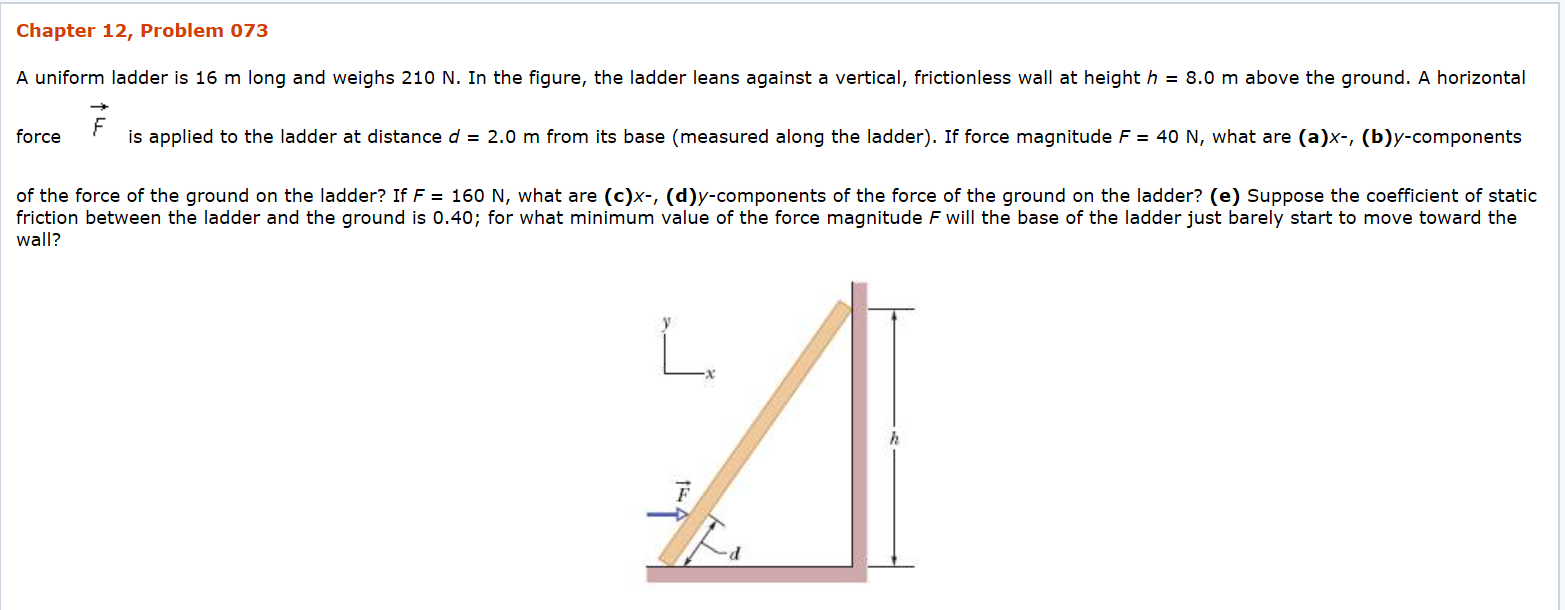How do I solve this force/friction question?

2 Answers
Angle made by the ladder with horizontal
(a) There is no vertical force at the wall as wall is given to be friction less. Let
As the system is in equilibrium sum the moments of all forces about the base must be
Then
(b)
(c) Under the action of revised applied force
Then
(d) Same as in (b) above.
.-.-.-.-.-.-.-.-.-.-.-.-.-
This needs to be reviewed.
(e) Force of friction between the floor and ladder depends only on the normal force, which is
The ladder starts to move when
Working backwards
#F = F_w-F_x = F_w-84# .....(1)
Using (1)
and finally
# F = 195.8 - 84 =111.8 N #
See below.
Explanation:
Calling
we have for resultant
and moments around
This way we obtain the equations
and solving
putting values
a-b)
c-d)
e) Supposing
and solving for
and putting values

